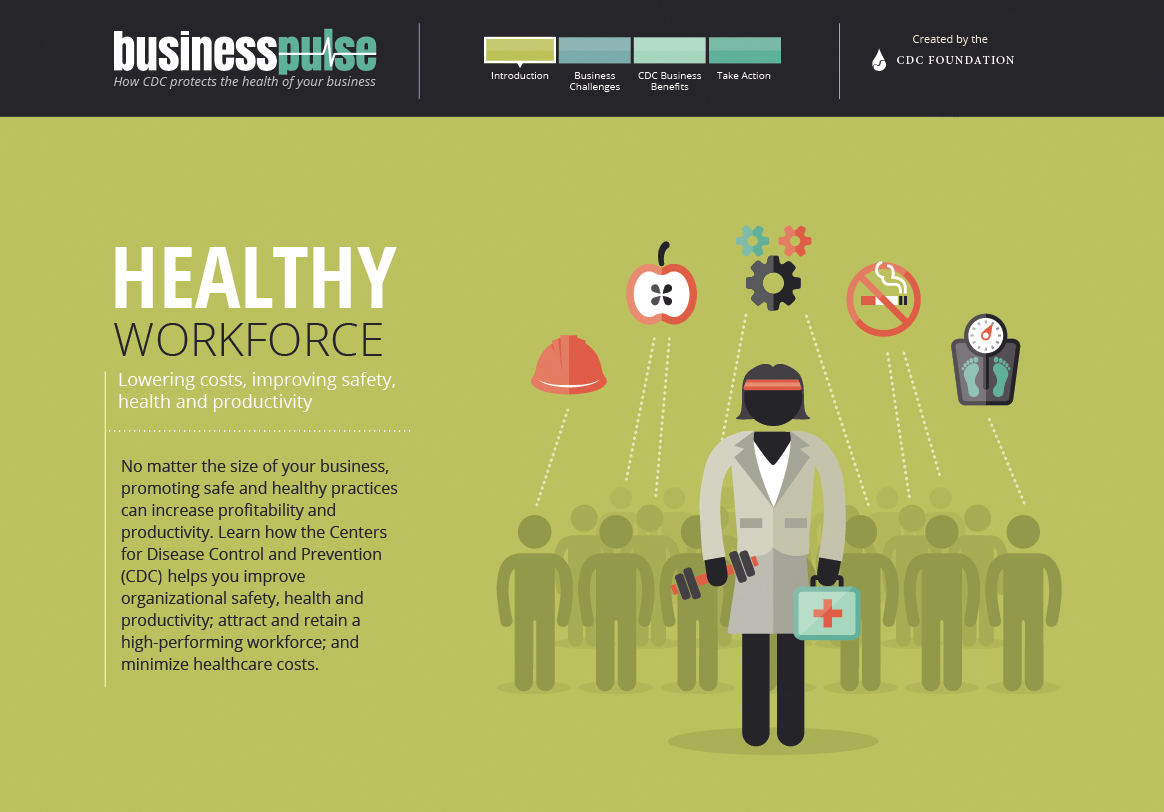You are here
Healthy Workforce, Healthy Business
As each new year unfolds, a lot of people make resolutions—many of which relate to health, fitness and well-being. From an employer’s perspective, keeping the workforce safe and healthy is critical to improving business productivity and financial performance as well as employee satisfaction.
In the new Business Pulse: Healthy Workforce, we’ve gathered some of our best programs and guidance from the Centers for Disease Control and Prevention (CDC) to help both employers and employees create a culture of health and safety.

The National Institute for Occupational Safety and Health (NIOSH) Total Worker Health™ Program is one of the ways CDC helps employers prevent work-related injury and illness and advance the health and well-being of the workforce. This integrated approach draws together organizational programs, policies and practices that comprehensively address physical, biological, and psychosocial hazards and risks, chronic disease prevention, health promotion, and resources for optimizing a safe, healthy and productive workforce—both on and off the job.
Another way employers can take action is through the CDC Work@Health® Program, which provides employers with the knowledge and tools to promote good health in their workplaces. The training emphasizes strategies that reduce chronic disease and injury risk, which ultimately improves overall worker productivity.
 We’re constantly learning from the great work of employers across the nation. For example, Lincoln Industries, a manufacturing company in Nebraska, decided to look at wellness as a main focus of their business—not as an add-on. Its workplace wellness program involves people at all levels of the organization and motivates participants by offering an annual trip to Colorado for a 14,000-foot mountain climb.
We’re constantly learning from the great work of employers across the nation. For example, Lincoln Industries, a manufacturing company in Nebraska, decided to look at wellness as a main focus of their business—not as an add-on. Its workplace wellness program involves people at all levels of the organization and motivates participants by offering an annual trip to Colorado for a 14,000-foot mountain climb. Today’s best companies not only keep their workers safe, they also invest in their overall health and well-being. Connecting organizational safety and health opportunity on the job lowers costs and boosts productivity. High-performing organizations really understand this interplay and they better serve their customers and their shareholders because of it.
